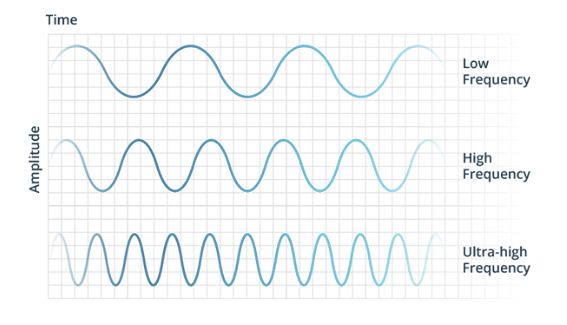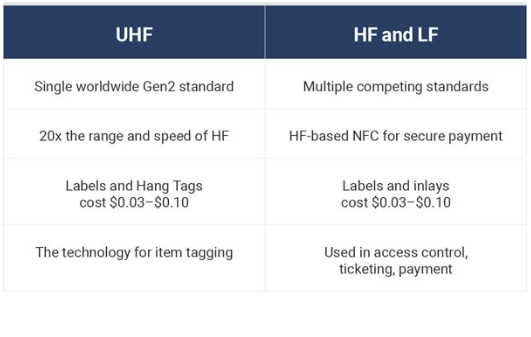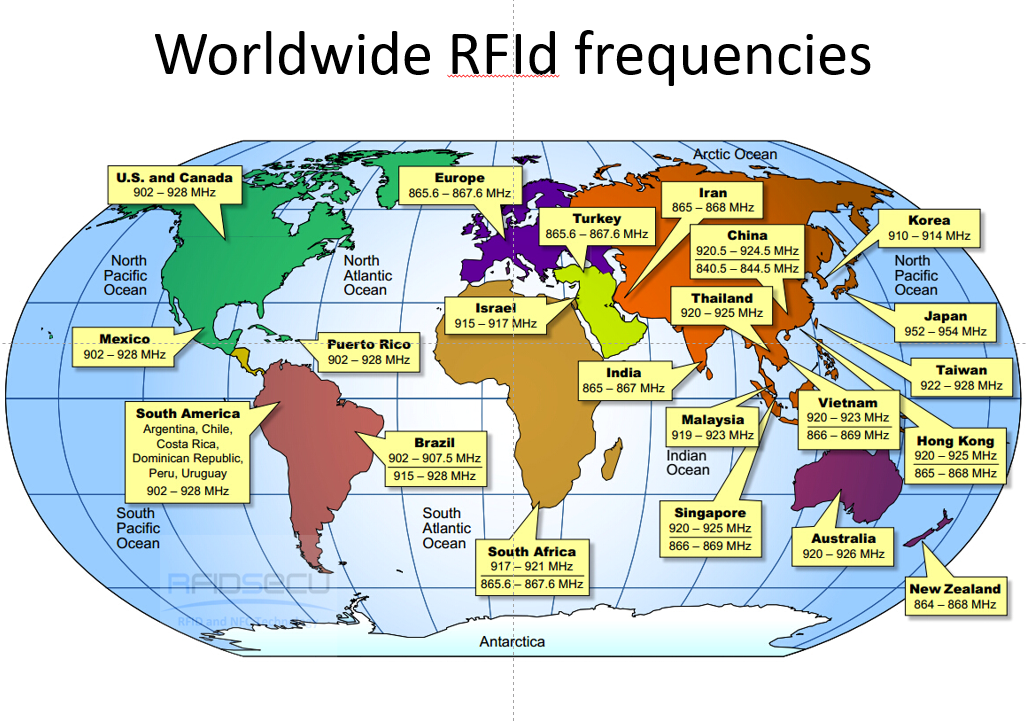RFId means Radio Frequency Identification.
There are different Frequency in use
- low frequency (LF)
- high frequency (HF),
- ultra-high frequency (UHF) bands

Low Frequency (LF) RFID
The LF band covers frequencies from 30 KHz to 300 KHz.Typically LF RFID systems operate at 125 KHz, although there are some that operate at 134 KHz.This frequency band provides a short read range of 10 cm, and has slower read speed than the higher frequencies, but is not very sensitive to radio wave interference.LF RFID applications include access control and livestock tracking.Standards for LF animal-tracking systems are defined in ISO 14223, and ISO/IEC 18000-2. The LF spectrum is not considered a truly global application because of slight differences in frequency and power levels throughout the world.
High-Frequency (HF) RFID
The HF band ranges from 3MHz to 30 MHz.Most HF RFID systems operate at 13.56 MHz with read ranges between 10 cm and 1 m.HF systems experience moderate sensitivity to interference.HF RFID is commonly used for ticketing, payment, and data transfer applications.There are several HF RFID standards in place, such as the ISO 15693 standard for tracking items, and the ECMA-340 and ISO/IEC 18092 standards for Near Field Communication (NFC), a short range technology that is commonly used for data exchange between devices. Other HF standards include the ISO/IEC 14443 A and ISO/IEC 14443 standards for MIFARE technology, which used in smart cards and proximity cards, and the JIS X 6319-4 for FeliCa, which is a smart card system commonly used in electronic money cards.
Ultra-high frequency (UHF) RFID
The UHF frequency band covers the range from 300 MHz to 3 GHz. RAIN RFID systems comply with the UHF Gen2 standard and use the 860 to 960 MHz band. While there is some variance in frequency from region to region, RAIN RFID systems in most countries operate between 900 and 915 MHz.
The read range of passive UHF systems can be as long as 12 m, and UHF RFID has a faster data transfer rate than LF or HF. UHF RFID is the most sensitive to interference, but many UHF product manufacturers have found ways of designing tags, antennas, and readers to keep performance high even in difficult environments. Passive UHF tags are easier and cheaper to manufacture than LF and HF tags.
RAIN RFID is used in a wide variety of applications, ranging from retail inventory management, to pharmaceutical anti-counterfeiting, to wireless device configuration. The majority of new RFID projects are using UHF (RAIN) as opposed to LF or HF, making RAIN the fastest growing segment of the RFID market.
The UHF frequency band is regulated by a single global standard called the EPCGlobal Gen2 (ISO 18000-63) UHF standard. Impinj spearheaded development of the Gen2 standard, lobbied governments to allocate frequency spectrum and co-founded the RAIN RFID Alliance along with Google, Intel, and Smartrac in order to promote the universal adoption of RAIN technology solutions across many different vertical markets.

In the context of labels/printing, when we talk about RFID, we usually mean UHF.
However, the frequency used is not the same worldwide.
There are different regions with different UHF frequency ranges, as shown in the image below:

